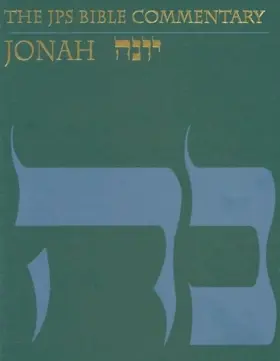

Jonah
Pages
52
Publisher
Jewish Publication Society of America
Published
8/1/1999
ISBN-13
9780827606722
Collections
This book appears in the following featured collections.
- Commentaries by Jewish Scholars by Matt Quintana
Reviews
Treatment with sensitivity to literary issues and with an eye for theological concerns from a Jewish perspective.
[Full Review]
Philadelphia: The Jewish Publication Society, 1999. Pp. xliii + 52, Hardcover, $34.95, ISBN 0827606729. David Marcus Jewish Theological Seminary New York, NY 10027-4649 This commentary on Jonah by Uriel Simon represents the first volume of the new JPS Bible Commentary series which now takes over from the completed JPS Torah Commentary series. The commentary is not actually new but is a translation of a Hebrew original which appeared as part of the series Mikra Leyisrae'l: A Bible Commentary for Israel (1992). Since the Israeli series and the NJPS series share similar aims, that of making available to the Jewish public commentaries combining modern scholarship and traditional Jewish exegesis, this English translation is a welcome first volume to the new JPS series. This is especially so because Uriel Simon, professor emeritus of Bible at Bar Ilan University, has been one of the pioneers in literary analysis on the Book of Jonah. In this commentary he now makes available to an English audience all the various rhetorical techniques which he and others have observed in the book. These techniques include awareness of the symmetrical arrangement of the book, of repetitions, key words, chiasmus, paronomasia etc. Simon has shown that the book displays a special twofold structural arrangement of content and themes and that the book may be divided into seven scenes each of which have their own inner unity and rhetorical flourishes such as repetition of key words and inclusios. All of these devices are illustrated in the splendid introduction to the present commentary as well as within the body of the commentary itself. In order to better illustrate certain linguistic qualities of the original Hebrew Simon has chosen not to use the new (and idiomatic) JPS translation (The Tanakh) but to utilize one of his own which ironically looks very close to the old, more literal, JPS translation of 1917. Thus repetition of key words which were concealed in the new JPS translation are now brought to the fore in Simon's translation.
[Full Review]

